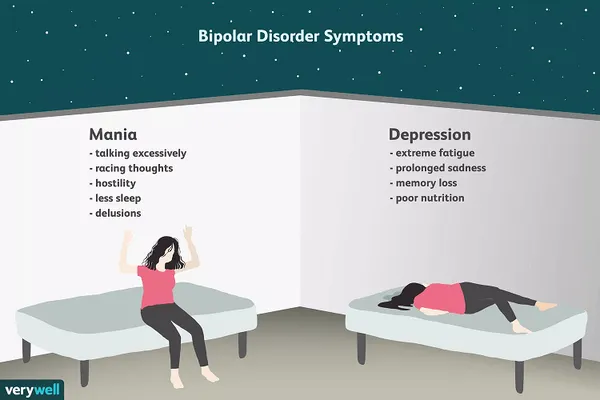The Layers of Bipolar Disorder
This blog post is associated with episode 13 of the podcast. Julia C. shares her expertise in bipolar disorder.
Bipolar disorder is a mental health disorder that causes shifts in a person’s mood, energy, concentration, motivation, and ability to carry out day-to-day tasks. These episodes of mood swings vary in frequency with some individuals experiencing them rarely or multiple times in a year. Bipolar disorder is a lifelong condition and is typically diagnosed when someone is a teenager or young adult.
I remember that 10-15 years ago, it was so normal to say that someone had bipolar disorder if they were acting out or went from angry to excited in a matter of seconds. It was easy to say and it seemed to perfectly describe the situation. Looking back, I can see how harmful and insensitive that must have been for people with bipolar disorder. While we cannot change what was considered normal and appropriate in the past, there is certainly something we can do today. Raising awareness and educating ourselves on these topics are great ways to contribute and learn about what we can do to support others with challenging and invisible disorders.

On the podcast, Julia shared the experiences of her friend with bipolar disorder. We’ll call her Gina. Gina would have extreme shifts in her mood and that caused her to have a hard time focusing and studying in university. To the day-to-day person, it might look like Gina had poor emotional regulation skills, but what we don’t see are the thoughts and feelings in her mind and how they impact her drive, will, and motivation to work through challenging situations and get work done. Over time, these shifts in mood were so overpowering that it led Gina to display suicidal ideation and she eventually was admitted to the hospital. Now, with psychotherapy, medication, and the support of her friends and family, Gina has learned to manage her symptoms and utilize healthy coping mechanisms during tough situations.
According to the Diagnostic and Statistical Manual of Mental (DSM-5), there are two main types of bipolar disorder that can be diagnosed depending on the level of severity and the symptoms present:
Bipolar I - experience at least one manic episode in their lives and may also have major depressive episodes
Bipolar II - experience at least one hypomanic episode (a less serious form of mania) and at least one major depressive episode
Individuals with bipolar disorder may also show a wide range of mood-related symptoms like depression, anxiety, fatigue, difficulty in sleeping, mood swings, and inability to focus and concentrate.
Aside from medication and psychotherapy, individuals can incorporate and consider lifestyle changes such as:
There are numerous changes that you can consider making and you don’t have to do them all at once. An intention you can consider is incorporating one of these changes this week.

Illustration by Hugo Lin. © Verywell, 2018.
As Julia mentioned, treatment is typically medication for mood stabilizing, psychotherapy, having a supporting system, and practicing healthy coping mechanisms. On the flip side, if you know or suspect someone who might have bipolar disorder, here are some things you can consider:
